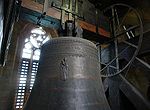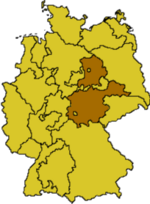Natural History Museum of Erfurt
German building and structure stubsGerman museum stubsHistory of ThuringiaMuseums in ErfurtNatural history museums in Germany

The Natural History Museum of Erfurt (German: Naturkundemuseum Erfurt) is a natural history museum in Erfurt, Germany. The museum has a permanent exhibition relating the natural history of the forests, fields, city and the geological history of Thuringia. There is also a special exhibitions programme. The museum has collections of botany, zoology, mineralogy — 6,500 specimens presented by Godehard Schwethelm (1899–1992) — and palaeontology. The statutory goals of the museum are the promotion of scientific research and education, the care of scientific collections and hosting scientific meetings.
Excerpt from the Wikipedia article Natural History Museum of Erfurt (License: CC BY-SA 3.0, Authors, Images).Natural History Museum of Erfurt
Erfurt Altstadt
Geographical coordinates (GPS) Address Nearby Places Show on map
Geographical coordinates (GPS)
| Latitude | Longitude |
|---|---|
| N 50.977 ° | E 11.026 ° |
Address
99084 Erfurt, Altstadt
Thuringia, Germany
Open on Google Maps










